
Several organizational changes are underway as MnDOT seeks to elevate the role of research and innovation within the agency.
The Office of Research & Innovation—formerly the Research Services & Library section consisting of research administration and the state transportation library—was formed this year to better reflect the breadth of research occurring throughout the agency, track research outcomes across MnDOT and play a stronger role in spurring innovation.
Katie Walker was recently named director, a role in which she will lean on her experience leading organizational change at Hennepin County. Walker succeeds section director Linda Taylor, who retired.
“Fostering a culture of innovation at MnDOT will involve supporting creative thinking, new ideas and customer-focused solutions. This not only supports our core values, but it equips us to better respond to a changing transportation environment,” said Walker, whose early career included stints as a planner for MnDOT, Dakota County and the Metropolitan Council.
Other changes underway, recommended by the Research Program Strategic Plan (PDF): expand the membership and responsibilities of the state research program governing board, and fund research implementation (putting new findings into practice) on an ongoing, rather than annual, basis.
|
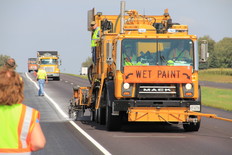
Technology and automotive sectors continue making enthusiastic claims that connected and autonomous vehicles are about to flood our streets. MnDOT and the Local Road Research Board (LRRB) funded research to help local agencies prepare for these vehicles and their infrastructure needs.
“Making sure that our signing and our striping are visible will be essential for autonomous cars,” noted Douglas Fischer, Anoka County highway engineer. “It’s also going to be good for all drivers.”
For now, agencies will continue to place 4-inch-wide pavement markings after resurfacing projects. Striping on existing pavements could be widened to 6 inches, but if a new standard is required for skip stripe spacing, wider markings may only be economically feasible on new surfaces. Agencies can likewise replace damaged signs, move blocked signage and trim foliage near existing signs.
Private sector companies guard proprietary information about the technologies used for sensing, navigation and sign-reading systems, and exactly what technologies will be brought to market and when they will be implemented are still unknown. Federal infrastructure and regulatory standards have not yet been developed for these vehicles.
For more information, check out Technical Summary 2019-18 (PDF).
|
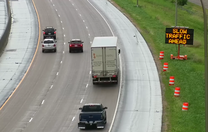
Urban construction work zones can cause unpredictable traffic slowdowns and queues, with many drivers braking suddenly and risking rear-end collisions. Advisory speed limits have not effectively changed driver behavior in these often complex and rapidly changing areas.
Researchers evaluated MnDOT’s newly developed Smart Work Zone Speed Notification System over two construction seasons along a 4.4-mile section of a complicated, multilane highway project. The system monitors traffic speed and flow; an algorithm uses this information to generate messages on variable message signs that warn drivers of slowed and stopped traffic. With this real-time information, drivers slow down adequately before a congestion hazard, avoiding sudden braking and collision risks. MnDOT is now using the system on two construction sites, with more planned.
For more information, check out Technical Summary 2019-21 (PDF).
|
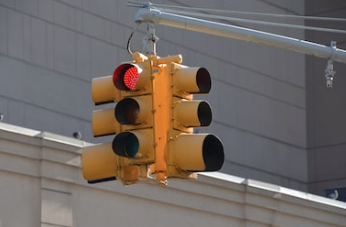
For decades, traffic signal control information in Minnesota has been difficult to distribute because of variations in availability and data formats across jurisdictions. Aware of recent trends toward dynamic traffic models and control, as well as advances toward autonomous vehicles, MnDOT planners realized the need for a unified, standard system of intersection control information (ICI) across the state.
In a recent project, researchers successfully documented all intersection control codes used in Minnesota and showed the feasibility of unified ICI for all stakeholders. They demonstrated its potential by fully coding a diverging diamond interchange, a complex highway configuration that is difficult to represent with traditional
models.
With this crucial step, MnDOT has moved closer to realizing its goal of a central traffic signal control system that could effectively manage all aspects of complex traffic flow near construction zones.
For more information, check out Technical Summary 2019-14 (PDF).
|
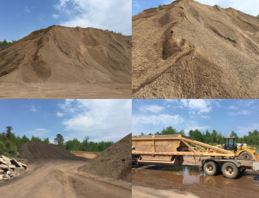
Gravel roads lose about an inch of material every year. With thousands of miles of road surfaces in Minnesota and diminishing sources of quality aggregate, local agencies need to manage aggregate resources carefully.
A new Local Road Research Board (LRRB) resource, the Gravel Road Management
Tool, helps agencies track information on gravel roads. In a related study, researchers investigated the use of recycled asphalt pavement (RAP) as a gravel substitute. The research team found varying results for compressive strength, dust generation and moisture susceptibility of gravel and RAP mixtures. “These findings give county engineers information to work with if they have a RAP resource,” explained Joel Ulring, pavement engineer with MnDOT’s State Aid for Local Transportation.
Generally, data showed that 70 percent RAP mixtures can be effective, particularly after the first year of service when dust generation is reduced and roadways begin driving as smoothly as all-virgin aggregate roads.
For more information, check out Technical Summary 2019-11 (PDF).
|
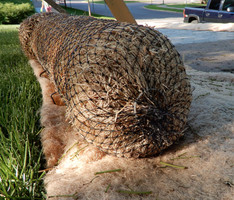
MnDOT frequently uses sediment control logs (SCLs) that are filled with filtering materials to manage sediment discharge at construction or other project sites. SCLs can fail prematurely if the wrong filter medium is selected for a site or if the SCL is installed incorrectly, resulting in considerable expense and the release of uncontrolled sediment into the environment.
Through extensive laboratory and field tests, researchers developed two tools to aid in effective SCL selection and installation. Further, they devised a table comparing the relative filtration capabilities of common SCLs, which can also be used to easily assess new filtering materials. These new guidelines have been incorporated
into SCL training materials used in erosion control and stormwater management certification courses.
For more information, check out Technical Summary 2019-23 (PDF).
|
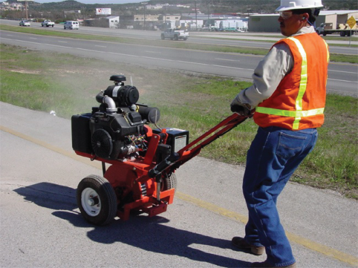
In a life-cycle cost analysis of the two most common crack sealing treatments, researchers found that rout-and-seal is slightly more effective, but clean-and-seal is still the right solution for many applications.
Rout-and-seal, the more expensive approach in which crews grind a shallow trench in the asphalt over the crack and fill with sealant, lasts about four years at an average performance level. Clean-and-seal, in which workers clean cracks with an air compressor and seal the joint, lasts about three years.
For more information, check out Technical Summary 2019-26 (PDF).
|
|